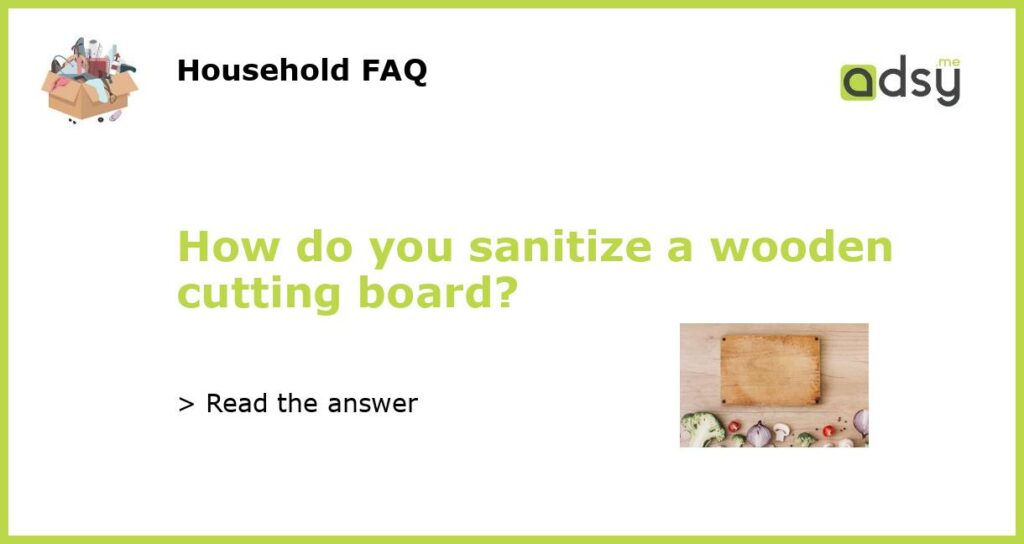Why Sanitizing Your Wooden Cutting Board is Important
Wooden cutting boards are a beautiful addition to any kitchen, but they are also a breeding ground for harmful bacteria. When you cut meat, fruits, and vegetables on a wooden board, small grooves and cuts can trap bacteria, making it difficult to fully clean with just soap and water. That’s why it’s critical to sanitize your wooden cutting board after each use to avoid cross-contamination and potential foodborne illnesses. Below are some ways to efficiently sanitize your wooden cutting board.
Method #1: Bleach Solution
Bleach is a potent disinfectant that can kill many types of bacteria found on cutting boards. To create a bleach solution, mix one tablespoon of unscented chlorine bleach with one gallon of water. Scrub the cutting board with the bleach solution, rinse with hot water, then let it air dry. It’s essential to use gloves when handling bleach, as it can be hazardous to your skin and clothing.
Method #2: Vinegar Solution
Vinegar is a natural disinfectant that can remove bacteria and leave a fresh scent on your wooden cutting board. To create a vinegar solution, mix one part water with one part vinegar. Scrub the cutting board with the solution, rinse with hot water, then let it air dry. For extra cleansing power, you can add some baking soda to the vinegar solution to create a paste. Rinse well and let air dry.
Method #3: Hydrogen Peroxide Solution
Hydrogen peroxide is an antiseptic that can kill germs and bacteria on your wooden cutting board. To create a hydrogen peroxide solution, mix equal parts of hydrogen peroxide and water. Pour the solution onto the cutting board, and let it sit for a few minutes. Rinse with hot water, then let it air dry. Never mix hydrogen peroxide with vinegar or bleach, as it can create dangerous fumes.
Method #4: Salt and Lemon
Salt and lemon are a great natural way to sanitize your wooden cutting board. Sprinkle coarse salt over the cutting board, then cut a lemon in half and rub it over the surface, squeezing as you go. The salt acts as an abrasive, while the lemon’s acidic properties help disinfect the board. Let the board sit with the salt and lemon for a few minutes, then rinse with hot water and air dry.
Method #5: Mineral Oil
Mineral oil is not a disinfectant, but it can help seal the surface of your wooden cutting board, preventing bacteria from penetrating the wood. To use, apply a few drops of mineral oil onto a clean rag and rub it into the board. Let it sit for a few hours, then wipe off the excess oil with another clean rag. It’s best to do this at night, so the board has time to fully absorb the oil.






